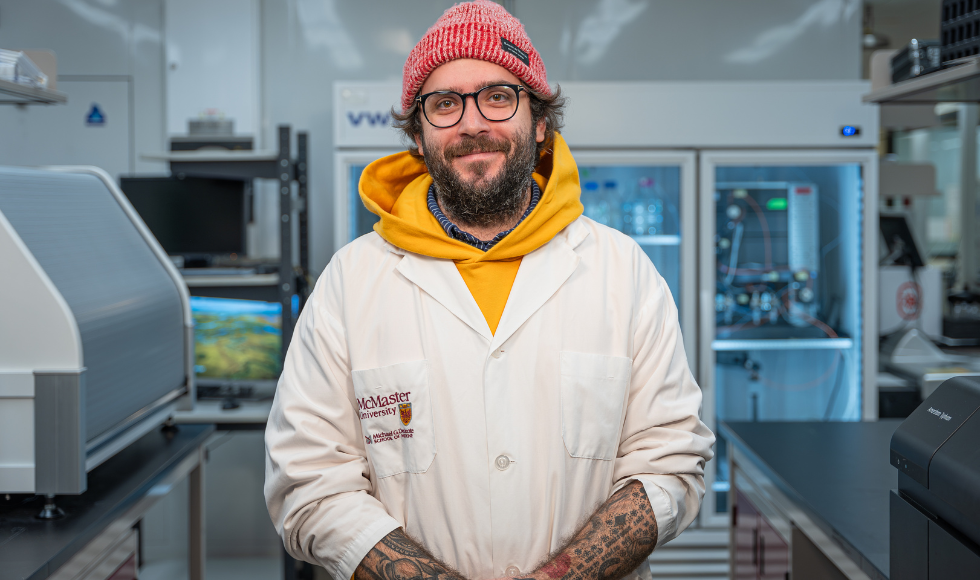Jon Stokes’ research on AI tackling superbugs was named one of the year’s top discoveries by The New York Times

Jon Stokes’ use of artificial intelligence to identify a new antibiotic was heralded as one of the most important scientific and technological advances of the year by The New York Times.
BY Jesse Dorey
November 24, 2023
In a celebration of transformative discoveries of 2023, The New York Times calls McMaster researcher Jon Stokes’ innovative work on antibiotic resistance one of the year’s most important scientific and technological advances.
The article, which includes groundbreaking discoveries in the field of kidney transplants and momentous technological feats like NASA’s James Webb Telescope, specifically highlights Stokes’ use of artificial intelligence to develop a treatment for a deadly, drug-resistant pathogen that impacts vulnerable hospital patients.
Acinetobacter baumannii, identified by the World Health Organization as one of the world’s most dangerous antibiotic-resistant bacteria, is a pathogen capable of causing pneumonia, meningitis and other infections, all of which can lead to death.
Stokes’ team used an artificial intelligence algorithm to predict new structural classes of antibacterial molecules, and identified a new antibacterial compound named abaucin.
Abaucin is especially promising because it exclusively targets A. baumannii, meaning the pathogen is less likely to rapidly develop drug resistance, the researchers say. This development could lead to more precise and effective treatments in the future.
“Bacteria are evolving ways to overcome existing antibiotics faster than we can invent new ones,” says Jon Stokes, assistant professor of biochemistry and biomedical sciences.
“As a result, we end up seeing more and more patients with drug-resistant bacterial infections that we can’t treat, which significantly increases illness and death.”
Antibiotic resistance is rapidly becoming a pandemic-sized problem. In 2019, antibiotic resistance was responsible for 1.3 million deaths. That number is expected to balloon to 10 million per year by 2050.
“Using AI, we can rapidly explore vast regions of chemical space, significantly increasing the chances of discovering fundamentally new antibacterial molecules,” says Stokes.
“AI methods afford us the opportunity to vastly increase the rate at which we discover new antibiotics, and we can do it at a reduced cost. This is an important avenue of exploration for new antibiotic drugs.”


